You’ve written excellent blog content, encouraged engagement, and built buzz around your social profiles to have an audience ready and waiting to purchase your book. Now, though, you’re wondering if all this work will lead to book purchases. How are you going to bridge the gap between blog readers or social media followers and book buyers? For that, you need email marketing.
Every blog reader is a potential buyer coming to your book launch. However, they only show up if you invite them and point out when to arrive—when your book is available for purchase. With effective email marketing in place, you can build a list of people who appreciate your work and email them when your book is released.
But how do you choose between the many platforms on the market? First, let’s take a look at how they’re the same. Most email marketing platforms allow you to:
- Quickly create emails using templates
- Integrate your email marketing campaigns with social media
- Schedule emails ahead of time
- Plan and automate campaigns
- Analyze engagements to improve future campaigns
So how are they different? They all do these things in slightly different ways and are built to appeal to diverse audiences. Which platform you choose will depend on your budget, goals, and audience size – there’s no ‘one size fits all’ in this game.
We’re here to help you decode the market by taking a close look at six of the best email marketing solutions available in 2021.
1. AWeber
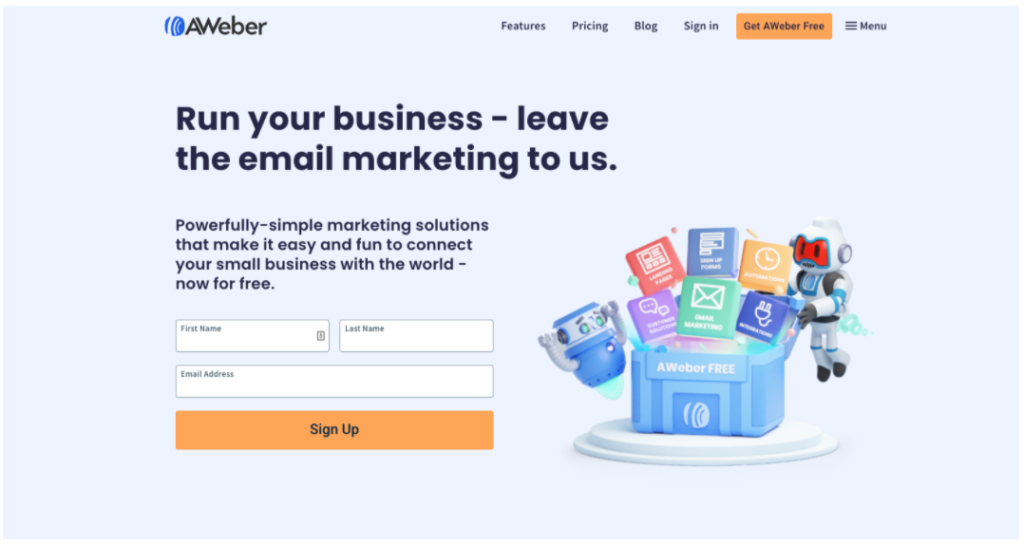
AWeber is beloved by small businesses everywhere for its simplicity and affordability. Its primary audience is small businesses, which means it caters explicitly to teams of one. That makes it a great option for bloggers and authors who don’t want to decode a load of marketing-speak to create a campaign.
With AWeber, you can easily produce professional marketing emails using a drag and drop builder and link to conversion-optimised landing pages that you also create in-platform.
The name of AWeber’s game is simplicity. So you won’t find many advanced functions here. You will find a system anyone can get to grips with quickly with minimal marketing knowledge and few tech skills. And that’s a big win for solo-marketers.
Pros and cons of AWeber

2. ActiveCampaign
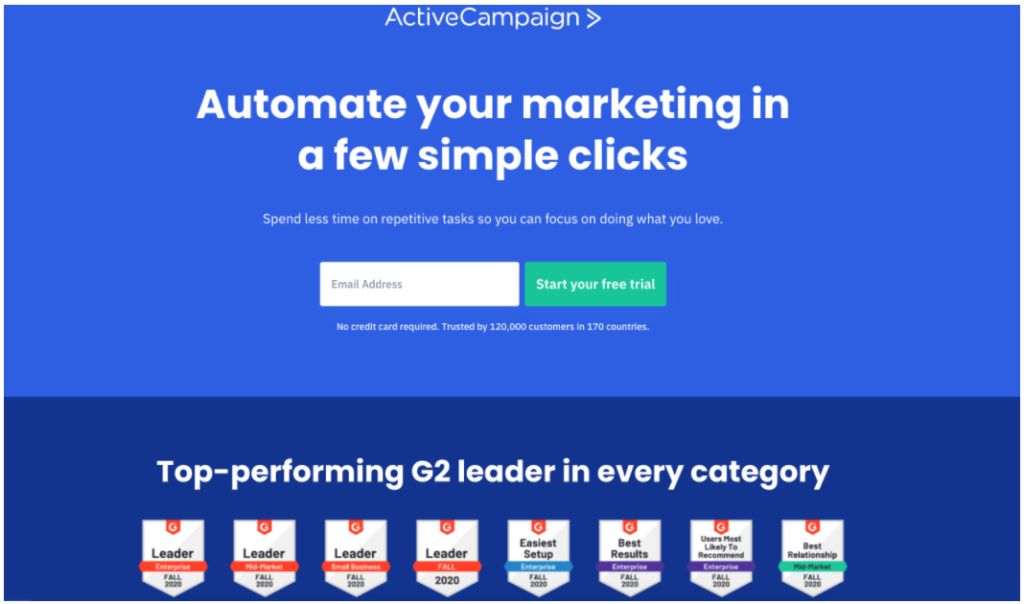
ActiveCampaign is a full-service marketing automation system. It targets customer service teams at medium-to-large organizations. But many smaller businesses use it for its excellent email marketing software.
Because it’s made for big businesses, it can present a big learning curve for novice marketers. However, it is built to sell, making it an excellent option for bloggers who want to launch and sell a book.
You’ll find everything you need to create a high-converting email marketing campaign in ActiveCampaign’s toolset, including:
- A visual campaign mapper (customer journey mapper)
- Website retargeting options
- Social media retargeting integrations (e.g., Facebook Pixel)
- Audience segmentation features
- Lead and contact scoring
- Analytics including A/B split testing tools
Plus, it offers more advanced tools like dynamic automation and CRM software for when you hit the big-time.
Pros and cons of ActiveCampaign

3. Constant Contact
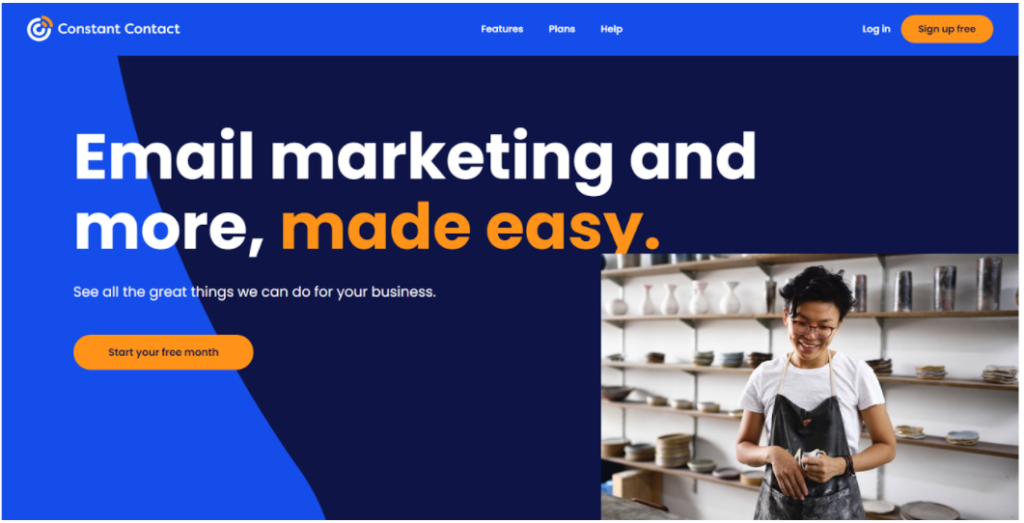
Like AWeber, Constant Contact targets the novice audience. Folks who need to send marketing emails but don’t have the time or energy to watch hours of tutorials to do it well will love this system.
With Constant Contact, you can manage lists, analyze campaigns, integrate social media, and link to eCommerce software. So, it’s a good option if you plan on using a platform like WooCommerce to sell more than a book – e.g., book-related merchandise.
Constant Contact offers excellent customer support, plus easy-to-follow online training and live seminars to help newbie marketers get started.
Pros and cons of Constant Contact

4. SendInBlue

If you have a small list or plan to send emails infrequently (e.g., once or twice per month), then SendInBlue might be the solution for you.
Initially launched to offer transaction-based emails, SendInBlue has evolved into a full email and SMS marketing solution.
You won’t find the kind of advanced marketing features you’d get with the likes of ActiveCampaign and GetResponse. But, you will be able to build a list, run a solid campaign and sell your book when the time comes.
The clincher? You can do it all on a per-email basis, which means you’ll only ever pay for the emails you send and not a penny more.
If you want to run a low-volume, low-frequency email marketing campaign and don’t mind building a stack of tools (e.g., to incorporate landing page software) when it comes to selling your book, you’ll get everything you need from SendInBlue.
Pros and cons of SendInBlue

5. GetResponse
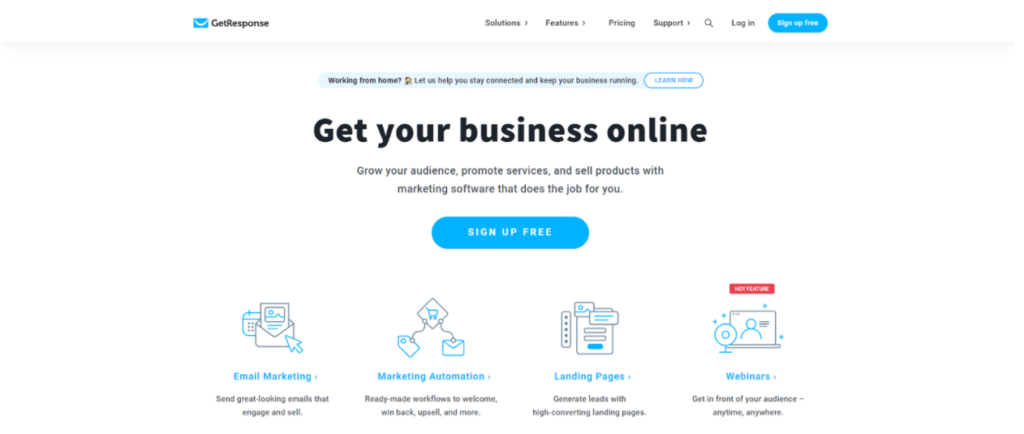
GetResponse is a conversion-optimized email marketing solution for people who are serious about sales.
Quickly create emails using a drag and drop builder, link a landing page, and even run webinars to build authority in your field.
GetResponse offers comprehensive A/B testing options and email tracking plus a highly-acclaimed suite of customer service options, including live chat, email, and phone support. And if you get a little stuck, you’ll have 24 access to tonnes of videos and how-to-guides for all experience levels.
Pros and cons of GetResponse

6. MailChimp
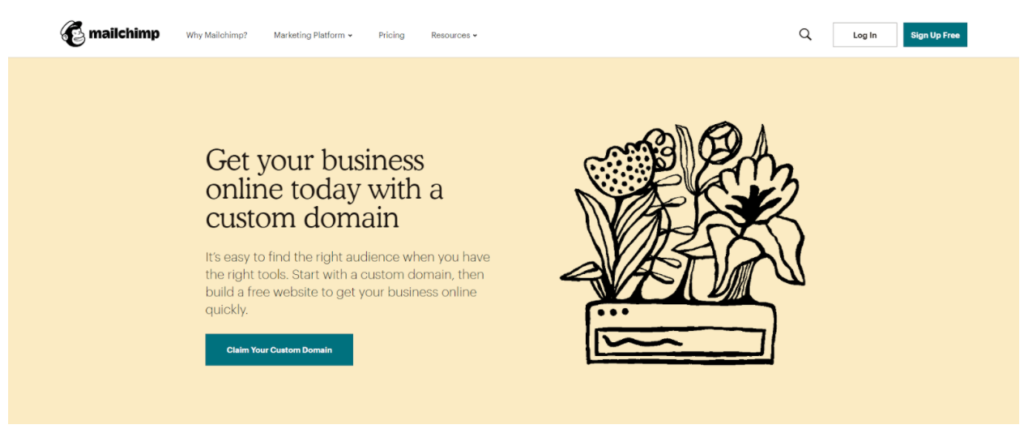
MailChimp is the household name of the email marketing world. It’s loved by its users not just for its functions but also for its approachable messaging and brand. If you like your software with a side order of community, MailChimp is for you.
The free-for-life option is a great stepping stone for individuals with small lists who are just getting started with email marketing. You can learn everything there is to know about running a great campaign on MailChimp’s forums and only pay for the privilege once you start seeing results.
MailChimp’s main selling point is how seamlessly it integrates with other essential business tools like WordPress, Shopify, Magento, and more. However, it’s not the best option for marketing automation and can get pricey once you hit the higher sending volumes.
This email marketing giant has been around for a long time – offering powerful features to the masses and their mates. However, they have been accused of falling a bit behind when it comes to modern email marketing options.
Pros and cons of MailChimp

In sum
With the right email marketing solution, you can effortlessly turn blog readers into book buyers. Any one of the tools mentioned above will help you communicate with your readers and make money from your launch. Still, it can be tricky to identify the platform that will work best for you.
Our advice? Ask yourself these three questions:
- Am I a marketing novice or a marketing nube?
- How much can I afford to spend each month?
- How quickly do I want to build my list?
People with little knowledge of marketing should choose AWeber, Constant Contact, or SendInBlue because these options are built for novices. Budget and list size will dictate the rest. Bloggers with smaller lists will get more value from SendInBlue’s payment plan than either of the others. But if you expect to grow your list quickly, you risk outgrowing the benefits of SendInBlue in a few months.
Don’t choose MailChimp’s free plan just to save a few bucks at the start. Their paid options are on the pricier side of the market, and you may come unstuck with their limited segmentation options as your list grows. That said, MailChimp is the right choice for people who love to learn in community environments or just love the look and feel of their platform.
If you’re a blogger with marketing experience and a larger list, you’ll find ActiveCampaign or GetResponse give you the best chance to max out sales.
And that’s a wrap!
Let us know which option you chose and how you got on in the comments below. But before you go…
Bonus tip: Before choosing your email marketing solution, get a professional email address with a personalized domain name, e.g., yourname@yourbusiness.com. You’re less likely to hit spam filters and more likely to get clicks if you do. Plus, you don’t need to make a new purchase because most good web hosting providers offer a personalized email address for free.
About the Author
Jodie Manners is a Conversion Copywriter and Content Strategist working with bold B2B SaaS and tech brands. Before founding This Copy Sticks, she spent a decade selling the toughest value proposition around and raised £2 million for charities before her 25th birthday. After 10 years in fundraising, Jodie now helps tech-mad trailblazers grow their businesses.
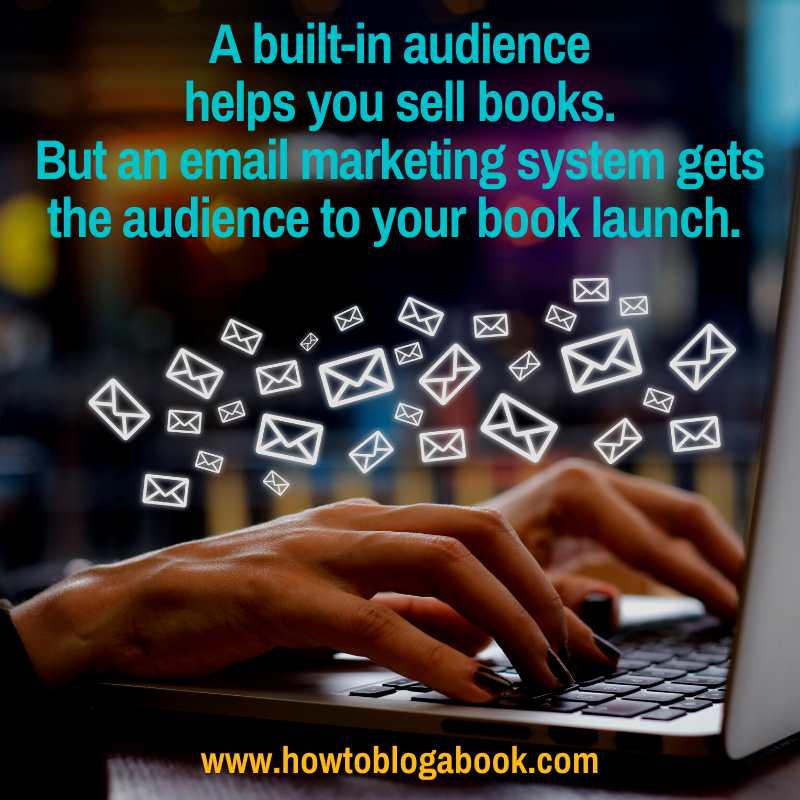

Getting reviews is very difficult for an Indie author. https://usbookreviews.com/ is an affordable service to get high-quality reviews and gain visibility for your book.
Our book may be the best in the world, but we need to remind ourselves often so that the competition doesn’t distract our audience
I wouldn’t suggest buying an email list, because not only is it spam but they may not be interested in your services.
Since you stated that you will be promoting your business via the internet, you can capture email addresses that way. Create a website and a Facebook Fan Page with auto responders and lead captures forms attached. This will give you leads of businesses and people that have shown an interest in your services.
I agree! Never buy an email list.
Job sites are very important for searching a job. Nowadays technologies are available and we may manage a job very easily using jobsite. We can apply for our job from this site by choosing our desired job. It is very fast way to get a job using job portal
I use sendinblue for my email marketing campaigns and its been a wonderful experience. Its so easy to use. Thanks for sharing.